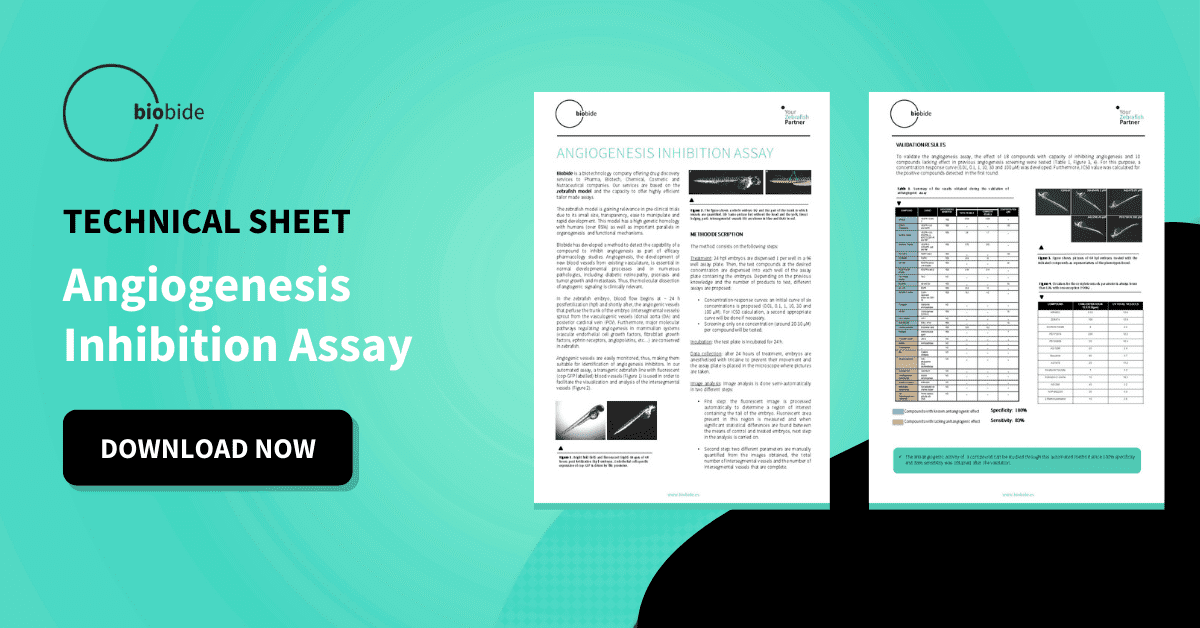The multiple stages of Drug Discovery are mainly focused on trying to build a better understanding of how a new potential treatment will affect future patients. The many hours in the lab performing tests and assays are designed to provide clear descriptions of the toxicity, efficacy, and safety of a new drug.
When a promising new molecule is found, how the potential treatment could affect humans needs to be fully understood.
The process is meant to control for as many variables as possible on the scale of an entire species. Zebrafish research has become a very useful tool in Drug Discovery for this reason. Their genetic similarities to humans as well as their scalability and efficiency have solidified their role in pharmaceutical research.
For some diseases this more generalized approach to finding a treatment does not work. One of the biggest and most deadly culprits is cancer. The numerous varieties of tumors and the complicated interactions between angiogenesis and metastasis make nearly every patient a unique case that requires specific treatment depending on genetics and etiology of the tumor.
Understanding the genomics of individual patients and individual diseases is how personalized medicine better treats both.

Zebrafish as In Vivo Alternative Xenograft Models
Breakthroughs in biomedical technology and pharmaceutical science have opened up new possibilities for Drug Discovery and personalized medicine. Zebrafish xenografts are a prominent example of how new experiments are providing promising potential for cancer treatments by providing insights into angiogenesis and how tumors spread throughout the body.
The shared evolutionary history between Zebrafish and mammals translates into similar genetics and gene expression, making the vertebrate fish a viable alternative animal model for studying cancer biology.
There is progress being made to help predict and treat patients more effectively with the use of patient derived xenografts.
Xenografts are models used in cancer research where a patient’s tumor cells are transplanted into an animal model. Researchers can then make in vivo observations on the growth and spread of the cancer and test any potential treatments. While xenografts are mainly associated with rodents, Zebrafish may provide the answer for a more efficient alternative animal model.
Using Zebrafish as an animal model lets researchers directly observe angiogenesis and the development of many types of cancer. Important features such as the transparency of the embryos and their rapid development of 4-5 days, provide an in vivo method for gathering reproducible results.
In the pharmaceutical industry Zebrafish are widely known for their practical benefits in the early stages of Drug Discovery and preclinical studies. The speed and efficiency of the developmental stages of this little fish are a clear advantage for any scientist or company looking to find more answers to the old cancer questions.
However, as a relatively new technique on the cutting edge of biomedical science, most researchers working in Drug Discovery are still waiting for more information. Once Zebrafish have a strong history of reliable, verifiable, and reproducible data, these small fish are sure to make a splash in xenografts like they have done in preclinical studies.
Transplanting human cells into non-human animals has notable uses in cancer research where a patient’s tumor can be observed in vivo with an animal model like Zebrafish.
Zebrafish: Successfully Finding Patients for Bevacizumab
Bevacizumab is an anti-VEGF therapy that is effective against colon cancer, lung cancer, glioblastoma, and renal-cell carcinoma. This promising cancer treatment is still in clinical trials and while it has shown a lot of promise, it is also associated with a long list of side effects.
Without reliable biomarkers for bevacizumab, it is difficult to screen patients for treatment. Individual tumors can either block or promote metastasis when treated with bevacizumab, creating a significant risk for applications without first screening patients. Knowing how an individual tumor will respond is an imperative for effective cancer treatment.
Zebrafish have been used as a xenograft model to quickly reveal how individual tumors will respond to bevacizumab.
Due to genetic similarities with Zebrafish vascular systems, xenografts can provide information on how anti-VEGF therapy will impact human patients. In practice, that means observing how an individual tumor develops in the animal model to determine how the treatment will affect the patient.
Researchers were able to evaluate how specific tumors react to bevacizumab with Zebrafish, providing information on how the treatment affects angiogenesis, metastasis, and the tumor itself. After generating xenografts, the Zebrafish models were used to detect phenotype profiles to evaluate and observe the effects of the treatment in individual tumors.
Zebrafish xenografts can be an in vivo screening platform for personalized medicine in cancer treatments.
In an example of personalized medicine, human patients were treated with bevacizumab after Zebrafish xenografts showed positive signs for treatment. The human responses matched the initial Zebrafish results, giving the patients access to an effective cancer treatment.
Personalized Medicine, Cancer Treatments, and Zebrafish Xenografts
Research into how cancer develops is complicated. Every individual tumor and every individual patient have specific factors contributing to how and why tumors grow and spread. On top of the long list of uncontrollable variables, it can be difficult to know if a patient will react to a specific treatment or therapy, especially when there are no biomarkers.
Gaining access to an in vivo animal model that accurately and efficiently provides information on how individual tumors react to cancer treatments could be the next step for oncology.
The rapid development and microscopic precision provided by Zebrafish translates into earlier detection of dangerous tumor cells that could lead to metastasis. With recent studies providing more proof of how observations in Zebrafish xenografts correlate to treatments in human patients, there is a lot of potential in the use of the small vertebrate fish as an alternative animal model.
Zebrafish can be used with cancer patients for personalized medicine that helps patients around the world find the right cancer treatment.
With initial results looking very promising, everything seems to be pointing to a future with more pharmaceutical companies looking into Zebrafish to build the future of personalized medicine.





